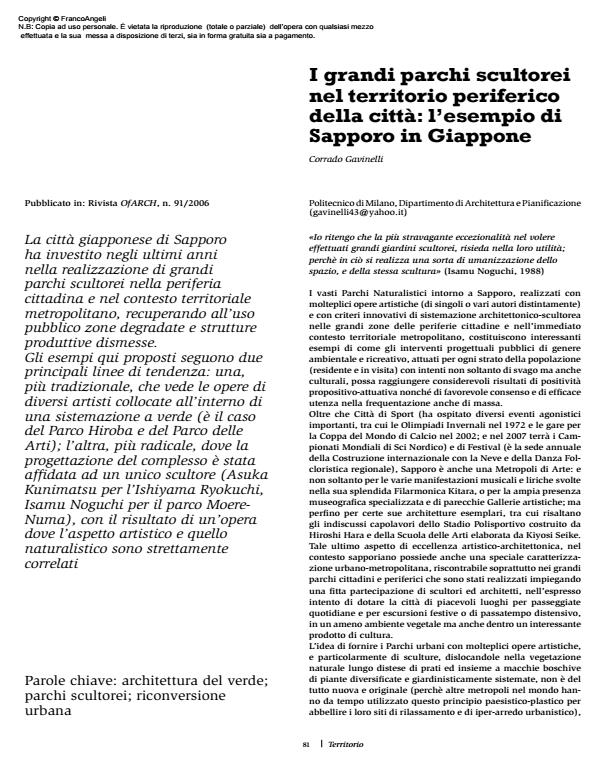I grandi parchi scultorei nel territorio periferico della città: l’esempio di Sapporo in Giappone
Titolo Rivista TERRITORIO
Autori/Curatori Corrado Gavinelli
Anno di pubblicazione 2011 Fascicolo 2010/55
Lingua Italiano Numero pagine 8 P. 81-88 Dimensione file 1086 KB
DOI 10.3280/TR2010-055013
Il DOI è il codice a barre della proprietà intellettuale: per saperne di più
clicca qui
Qui sotto puoi vedere in anteprima la prima pagina di questo articolo.
Se questo articolo ti interessa, lo puoi acquistare (e scaricare in formato pdf) seguendo le facili indicazioni per acquistare il download credit. Acquista Download Credits per scaricare questo Articolo in formato PDF

FrancoAngeli è membro della Publishers International Linking Association, Inc (PILA)associazione indipendente e non profit per facilitare (attraverso i servizi tecnologici implementati da CrossRef.org) l’accesso degli studiosi ai contenuti digitali nelle pubblicazioni professionali e scientifiche
The Japanese city of Sapporo has invested in recent years in the creation of large sculpture parks on the outskirts of the city and in the metropolitan area, thereby recovering run down areas and abandoned industrial sites for public use. The examples given here follow two main tendencies: one, more traditional, where works by different artists are sited inside green areas (the Hiroba Park and the Park of the Arts) and another, more radical, where the design of the whole park is performed by a single sculptor (Asuka Kunimatsu for Ishiyama Ryokuchi and Isamu Noguchi for the Moere-Numa Park), with the result that the art and nature aspects are closely correlated.
Parole chiave:Green architecture; sculpture parks; urban redevelopment
Corrado Gavinelli, I grandi parchi scultorei nel territorio periferico della città: l’esempio di Sapporo in Giappone in "TERRITORIO" 55/2010, pp 81-88, DOI: 10.3280/TR2010-055013